Road Signs – What is the Most Common & Uncommon Road Sign?
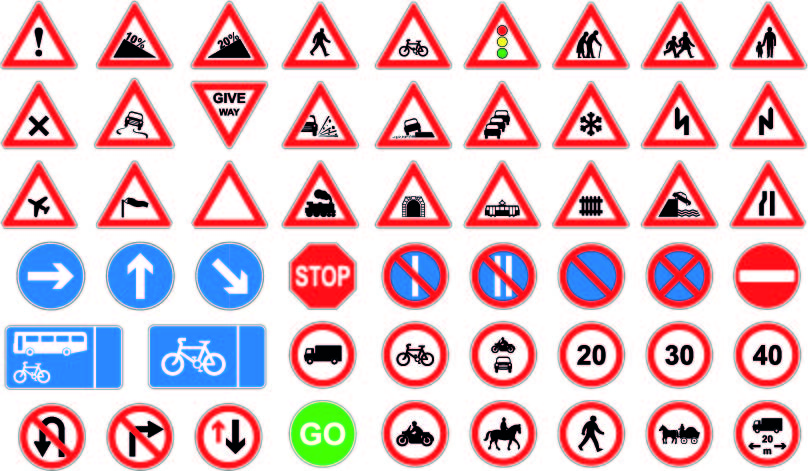
Have you driven for years and assume you know all the signs? Or perhaps you’re studying for your driving test and wondering which signs you might get tested on? Either way, the ability to recognise signs and act accordingly will make your experience as a driver safer and your decision making on the road faster.
There are hundreds of different road signs, each with its own unique meaning that must be memorised by drivers. Most signs will fall into one of the three below categories based on their shape.
Circular Road Signs
Signs that give orders. In order to drive legally, these signs must be followed. Circles with red borders instruct on what you cannot do. Circles with blue borders instruct on what you can do (such as ‘left turn ahead’).
Triangular Road Signs
Signs that warn you. Triangles that are equilateral will warn drivers of hazards ahead or a road layout such as sharp bends. In most cases, these signs will have a red border.
Rectangular Road Signs
Signs that inform you. White rectangular signs give directions on minor roads. Blue rectangular signs give information on motorways. Green rectangular signs give directions on primary roads. Rectangular signs can also be used for bus lanes and congestion charge zones.
Let’s take a look at the most common signs and a few not so common signs.
No U-Turns Allowed
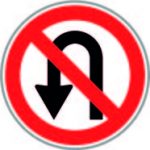
The no U-turn sign is found at intersections where the driver is not legally allowed to make a turn to go in the opposite direction. If a driver needs to make a 180 degree turn, they must do so at an intersection where it is legal to do so.
Speed Limit Signs
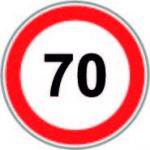
An essential sign for traffic control are speed limit signs. These signs will vary in their number subject to what area you’re driving through. You may notice that many residential areas do not display speed limit signs. This is because the limit is 30mph and it’s assumed all drivers know this law.
No Entry
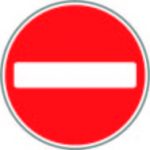
A prohibitory traffic sign, the no entry sign refers to no access for vehicles. The sign also indicates that no bicycles or buses are allowed to use the road either.
Stop Sign
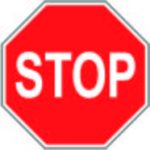
A prohibitory traffic sign, the no entry sign refers to no access for vehicles. The sign also indicates that no bicycles or buses are allowed to use the road either. One of the most iconic and widely recognised road signs is the stop sign. It makes you do just that. Stop! It carries the stand alone red background colour in order to highlight its importance and it’s the only sign that is octagonal in shape. The sign lets drivers know there’s an intersection and an area where traffic might be moving in opposite or crossing directions.
Give Way Sign
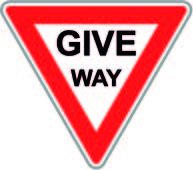
Give way signs are similar to the stop sign but used in less dangerous circumstances.. You will find give way signs in situations where merging drivers must prepare to stop if necessary to let another moving driver who is approaching proceed. Sometimes referred to as ‘yield signs’ if refers to a driver who has either stopped or slowed down to allow another vehicle through – the driver has ‘given way’ (or ‘yielded’).
Common UK Road Signs You Might Not Recognise
The majority of road signs on UK roads are self-explanatory. However there are a number of less known ones that simply need learning. Here’s a few of the less recognisable signs.
No Overtaking
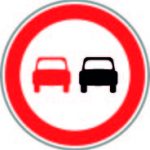
This sign is often displayed when the road is too narrow or there is poor visibility or overtaking. It can also serve as a warning that there is a risk of vehicles pulling out of parking spaces which could lead to an increase in the risk of a head-on collision..
Surface Dressing
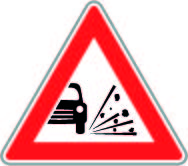
A sign with debris flying from your wheels could see you looking for your next U-turn opportunity. Fear not. This sign does not imply your tyres will burst if you drive over this surface. It simply refers to surfaces that aren’t tarmac and may have been resurfaced with ‘surface dressing’. This involves treating the road with a mixture of loose chippings and bitumen. You can drive over it but slow down as at speed, the chippings could damage your paintwork.
Staggered Junction
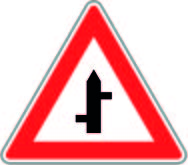
A sign indicating that there is a staggered junction ahead. Drivers may need to slow down in the middle of the road to turn right unless there is a turning refuge.
Minimum Speed Limit
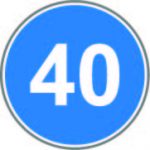
This sign can be confused with a 30mph speed limit sign but those signs are on a white background with a red border. This white background and blue border sign means there is a minimum speed allowed unless you cannot comply for safety reasons.
T-junction with priority over vehicles from the right
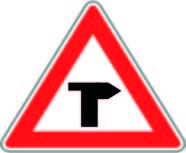
Known as one of the most uncommon signs and one with a high percentage failure rate on theory tests! This sign lets the driver know they’re approaching a T-junction where there’ll be dotted lines on the road. The lines tell the traffic from the right to give way so you are safe to carry on turning without stopping for them.